The Great Famine by Caoimhe Leonard
advertisement
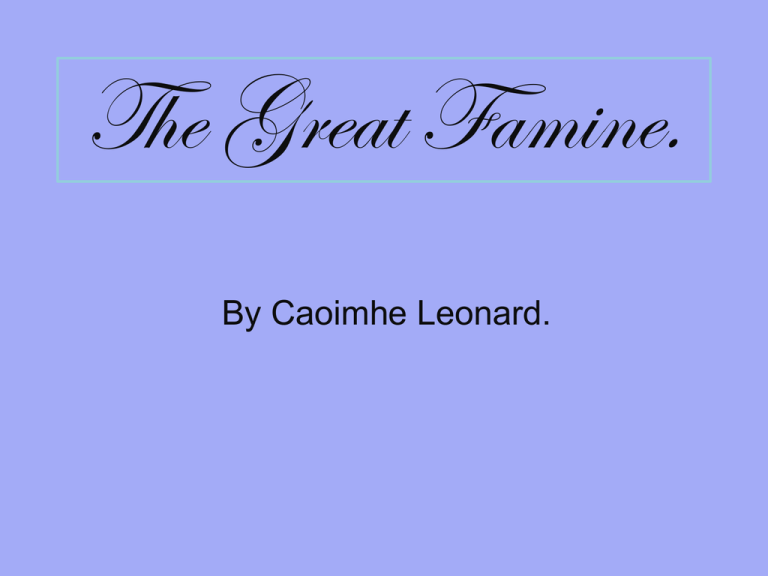
The Great Famine. By Caoimhe Leonard. The Great Famine Of 1845 Blight in the potatoes was the cause of the famine. Background to the Great Famine The potato was the principal source of nutrition for most people of the poorer classes because this crop produced more food per acre than wheat.The practice of Conacre/Land Division meant that peasants needed to produce the biggest crop possible. Social Conditions. At the start of the famine over one half of the population of the country lived in small oneroomed dwellings. The other half would live in two-storey houses or mansions – landlords or wealthy tenants – mostly found along the East and the South Coast . People had nothing to eat or at best could manage a meal of porridge. Hunger was commonplace and small scale famines were therefore not unknown. Dependence on the Potato. The potato became the Main diet of much of the country during the early 1800s as it was ideally suited to the Irish climate and could be grown in poor soils.By 1845, it is estimated that about one third of the entire population was totally dependent on the potato, and in poor regions, like Mayo, it was the only food eaten by up to nine tenths of the population. Death, Disease and Starvation. Subsistence-level Irish farmers found their food stores rotting in their cellars, the crops they relied on to pay the rent to their British and Protestant landlords destroyed. Peasants who ate the rotten produce sickened and entire villages were consumed with cholera and typhus. The potato crop of 1845 was destroyed by a fungus, commonly known as Blight, which had spread from North America to Europe. By the early autumn of 1845 it was clear that famine was fully active in Ireland. Workhouses. Landlords evicted hundreds of thousands of peasants, who then crowded into disease-infested workhouses. Other landlords paid for their tenants to emigrate, sending hundreds of thousands of Irish to America and other English-speaking countries. In many cases, these ships reached port only after losing a third of their passengers from disease,hunger and other causes. Conditions in the workhouses were desperate and often the only way to get food was to fight for it, leading to misery, violence and even more deaths The Workhouses The Coffin Ships. The condition of the ships in which tens of thousands of people emigrated were appalling as many middle-men used substandard vessels and carried too many people, with a view to making a quick profit. On one of these coffin ships, of the 348 passengers, 117 died at sea; on another, going to Canada, 158 died of a total of 476 passengers. The Coffin Ships Effects of the Great Famine The Dead & Cultural Changes. The Irish Famine of 1846-50 took as many as one million lives from hunger and disease, and changed the social and cultural structure of Ireland in a number of profound ways. The Irish language, which was already in decline, suffered a near fatal blow from the famine, since it was the more remote areas which still used Irish that were most affected by the famine. Land holdings became larger, as the tendency to subdivide the family farm declined. Emigration. It is estimated that at least one million people died from starvation and its attendant diseases, whilst a further one million emigrated during the famine years. The population of the island dropped from over 8 million in 1845 to about 6 million in 1850. By 1900, over 4 million had left Ireland and emigration continued well into the 1950s – averaging 60,000 a year. Early marriages almost disappeared and a decline in the birth rate resulted. The Beginning of the End for the Landlord System. The Landlord class was ruined by the famine. The Government introduced the Encumbered Estates Act in 1849, making it easier for landlords to sell off their land. The land acts later in the century fought for by Parnell and Davitt finally put paid to this hated system of authority in rural Ireland. After The Famine The End. A Project by Caoimhe Leonard.
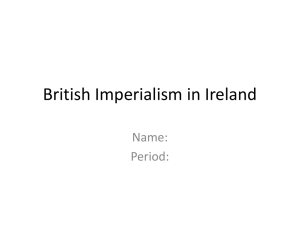
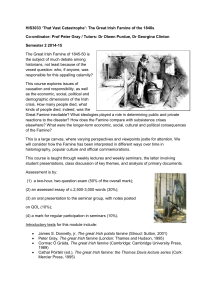

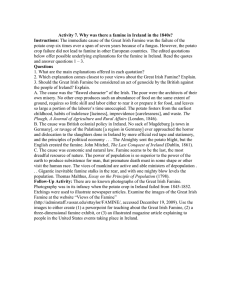
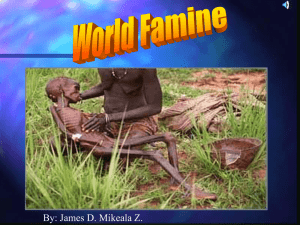
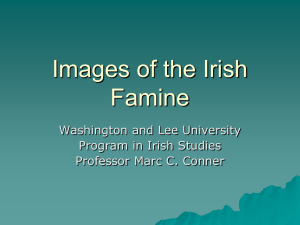

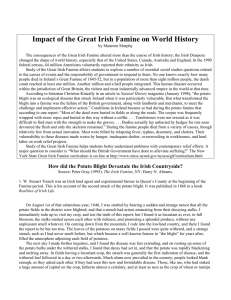
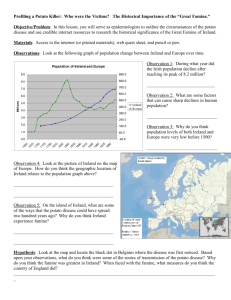
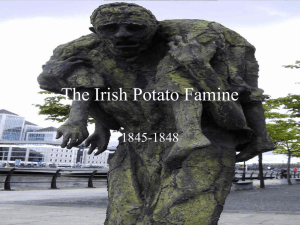

![The Real Irish-American [Famine] Story Not Taught in Schools](http://s3.studylib.net/store/data/006750449_1-fcf17f3f993595f2d4ade22048a1bd87-300x300.png)